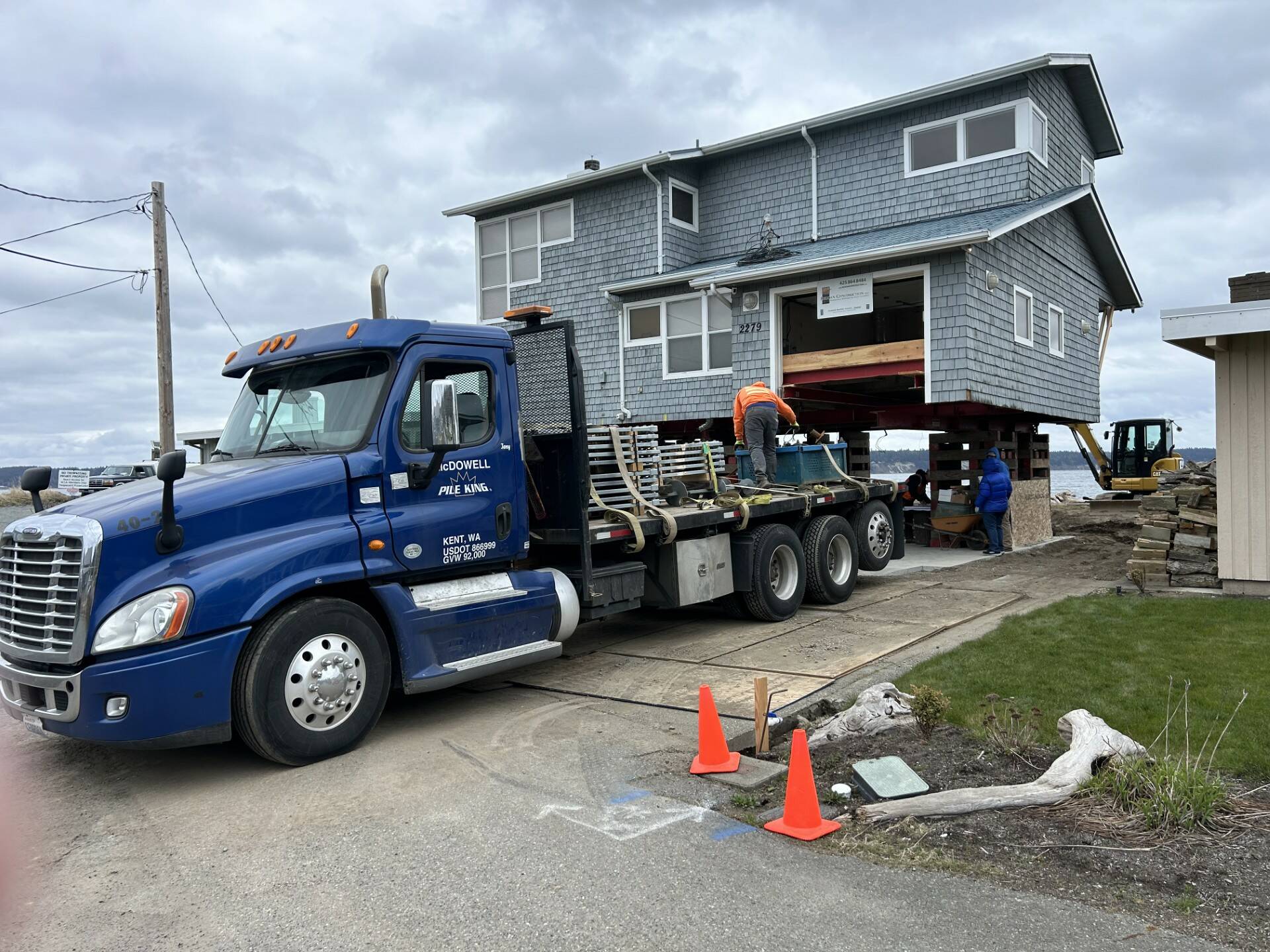Coastal properties on Whidbey mean island views, circling eagles and convenient beach access. It can also mean yearly flooding, damaged drywall, ruined insulation, overtopping bulkheads, septic failure and lasting drainage problems.
Some fed up property owners have decided to bite the bullet and raise their home above the flood zone.
According to Island County’s sea level rise strategy, permitting and flood insurance guidelines do not adequately mitigate these hazards, and it’s only getting worse. Researchers predict a 1-3-foot rise in the next century, which could displace whole neighborhoods.
Since 1990, Island County has been hit with eight extreme flooding events resulting in disaster declarations. These typically come from severe winter storms and king tides. Island County coastal communities are particularly vulnerable during these events, as they are often impacted by both erosion and tidal surge.
Lifting a house above the flood zone is quite an undertaking, said Jeff Reddan of Reddan Construction, who has spent the last week doing just that for a property on Whidbey Shores, near East Point on South Whidbey.
The first step is building cribs, wooden towers, which come underneath the house with steel eye beams. Once contractors get the house supported at the ground level, they cut the framing free from its foundation. Then, they lift the entire house — with jacks, not balloons — a foot at a time, putting more lumber in with each lift, until the home stands about 11 feet above the dirt.
For the Whidbey Shores home, there was a five-foot setback rule from the property line, and the house was only three feet away. On top of lifting it 11 feet, they had to move it two feet north, Reddan said.
Beyond all this work, the coastal soil is terrible for building.
“The whole thing would turn to mush down there if there was a big earthquake,” he said.
The process is called liquefaction, he said, where loosely packed, water-logged sediments lose their strength when the ground shakes. To combat this, they must install 22 helical anchors, drilled 45 feet into the earth. The foundation is then poured atop these anchors.
Island County has 196 miles of shoreline, characterized by low-lying beaches, canals, wetlands and unstable bluffs, according to county data. About 63% of the shoreline is designated for residential land use.
Raising a property may be the best mitigation strategy, according to Island County’s plan, but it’s not without problems. This type of work has an unknown environmental impact and is an impermanent solution. Other than that, it’s costly.
The price tag on house-lifting depends on the size of the home and the location, Reddan said, but it can be anywhere from $250,000 to $400,000.
This is the first time Reddan has lifted a house on Whidbey, he said, but he can already tell it won’t be his last. Since he started, several homeowners have come by the site and asked him about the possibility.
Options other than yearly maintenance, according to the county, include flood proofing the floor and moving the entire structure somewhere else. Obviously, environmental impact, potential permanence and price are not mitigated here.
Any new facility construction or major repair project at Naval Air Station Whidbey is required to analyze 100-year flood plain maps and potential sea level rise, said Michael Welding, public information officer.
The Navy’s environmental department determined a two-foot sea level rise would be inconsequential to base operations. That said, any recently built facility besides aircraft hangars, such as an aircraft simulator and an unmanned aerial vehicle control station, have been built on higher ground.
The threat of sea level rise will harm much more than coastal homes. According to the sea level rise plan, as it increases, intertidal habitats like wetlands, mudflats and marshes are in danger of disappearing. Housing developments such as Whidbey Shores block intertidal habitats from expanding inland.
Estuaries, mudflats and marshes provide refuge and foraging opportunities for wildlife, and vegetation in these areas provide overwintering habitat for millions of migratory waterfowl. These wetland zones buffer sediment from waterways and streams from moving into the ocean and protect communities by storing floodwaters and limiting storm surge.



